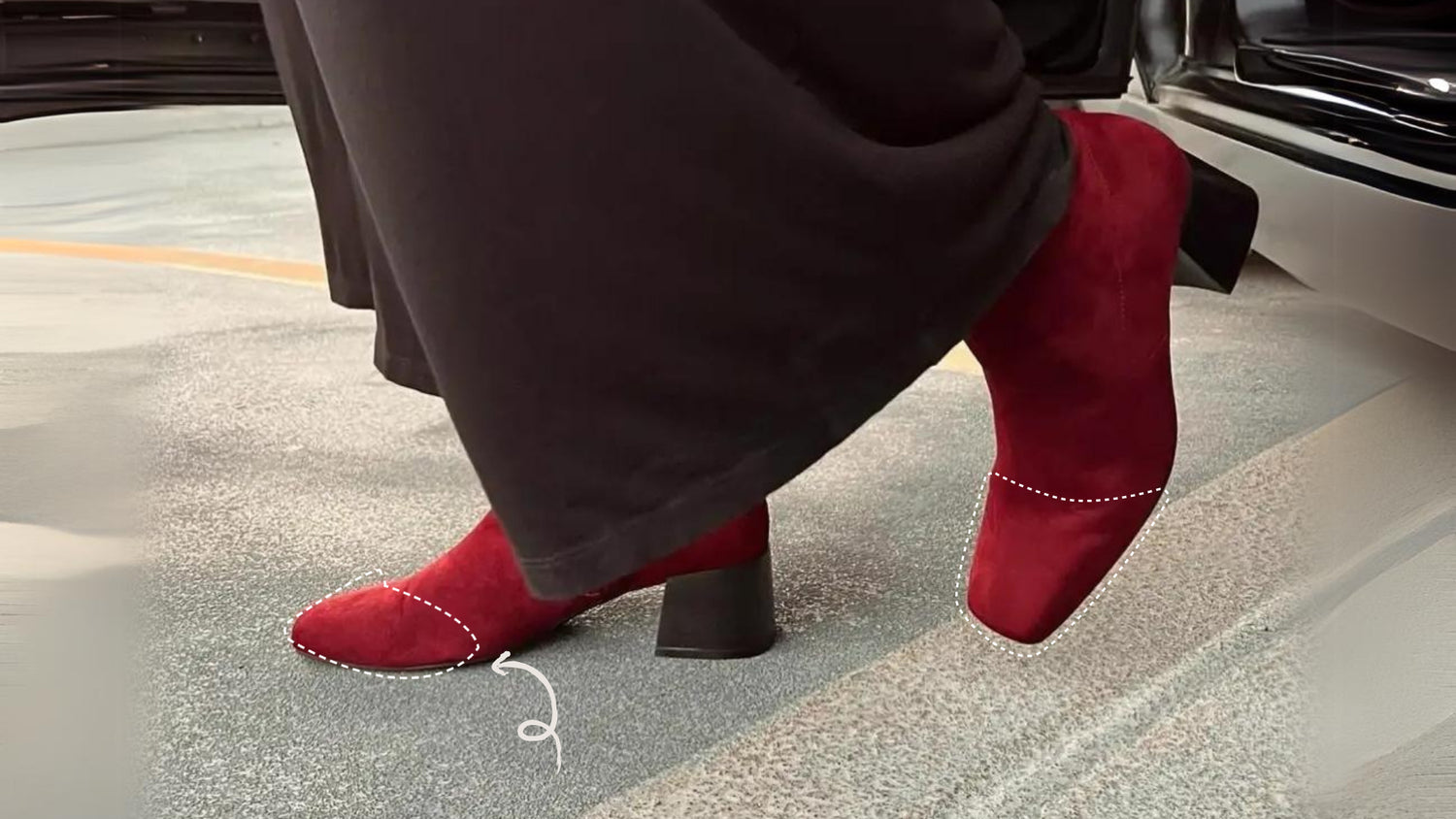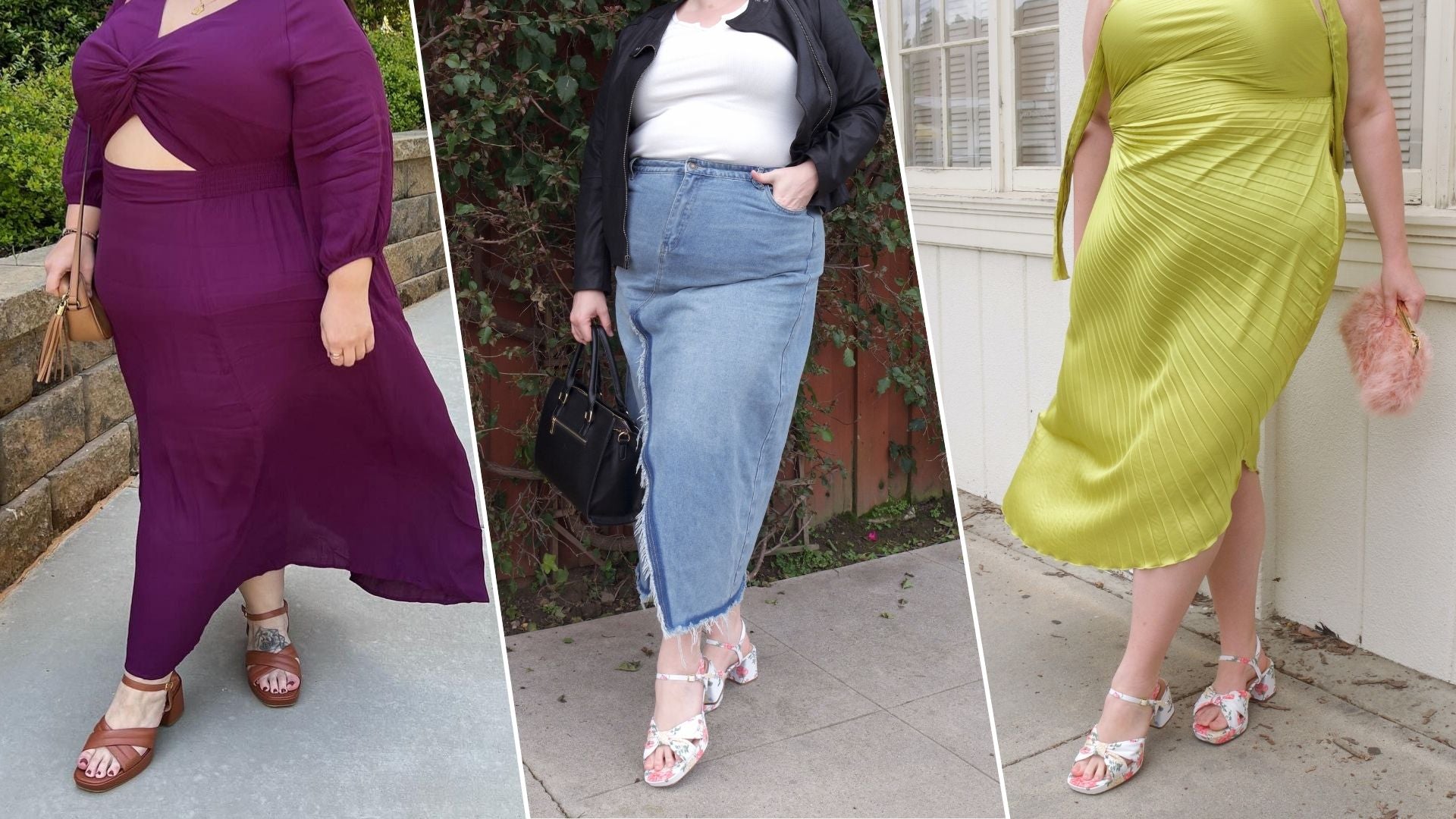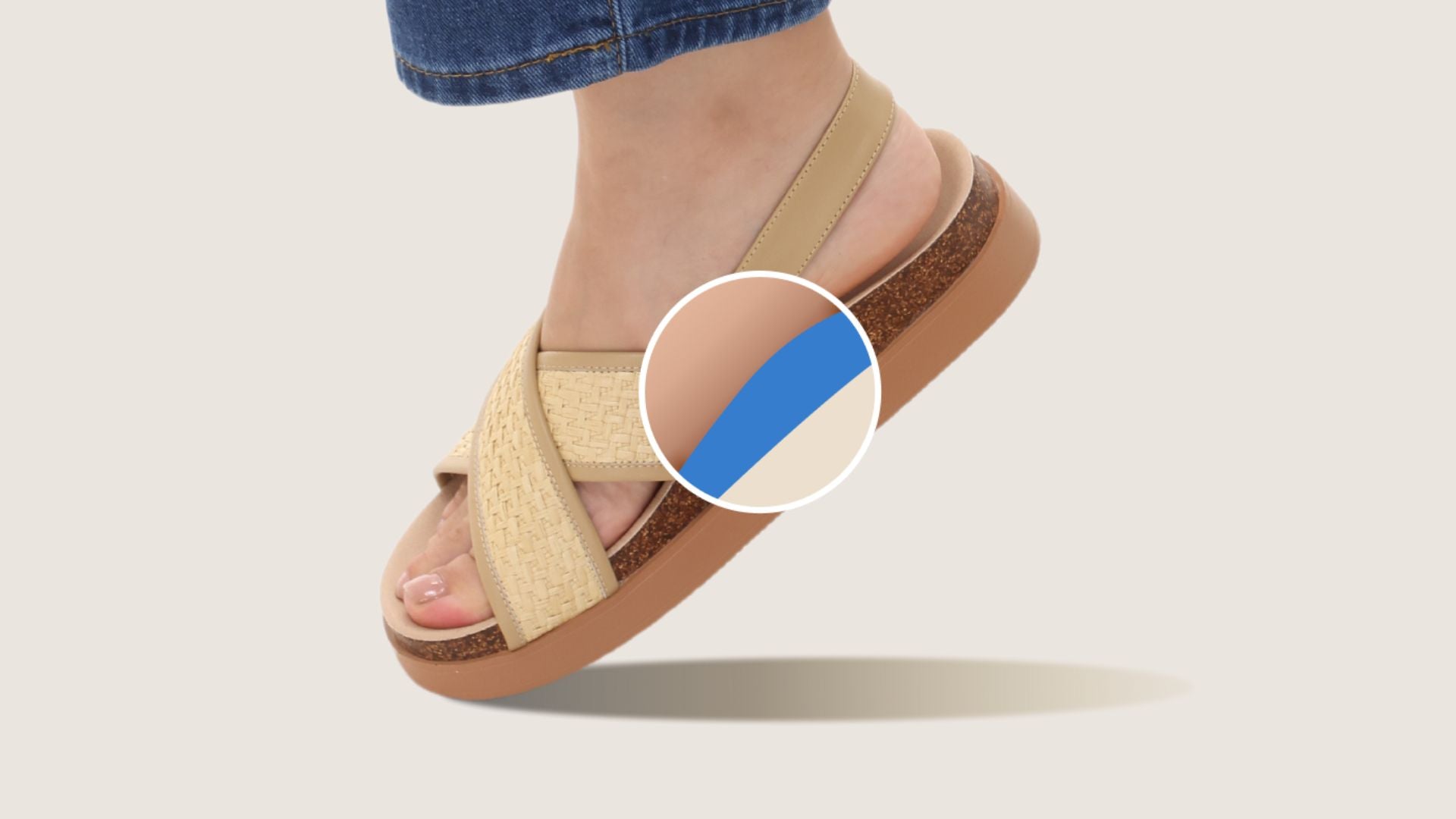Slipping on a pair of cowboy boots should feel just right, but figuring out the correct width-D or EE-can be as bewildering as finding your way through an old western maze. We're here to clear up the confusion and help you pick the width that'll have your feet thanking you. We're going to show you how to measure your foot's every curve and contour to find a boot that fits you like a dream. Whether it's snug and secure or roomy and relaxed you're after, we've got you covered.

1. D Width Cowboy Boots
When it comes to women's cowboy boots, "D width" refers to a wider fit than the standard. This is different from men's sizing, where a D width is considered standard. D width is designed for those who need more space in the boot for comfort. It accommodates wider feet and provides extra room in the toe box, which can help prevent the toes from feeling cramped or squished. It's also a good choice for women who have bunions or other conditions that require additional room.
The fit of a D width cowboy boot for women should feel comfortable across the foot without any tightness. There is usually a noticeable difference between B (the standard width for women) and D widths, particularly around the ball of the foot, the widest part. While offering this extra space, D width boots still maintain the boot's shape and style, ensuring that they don't just look good but feel good too. Despite being wider, these boots should still fit snugly around the ankle to provide proper support and prevent the foot from sliding too much inside the boot when walking.

2. EE Width Cowboy Boots
For women requiring an even more generous fit than the D width, EE width cowboy boots are the go-to option. This extra-wide sizing accommodates feet that are significantly broader across the ball, toe area, and instep. Women who find that regular and even wide-width shoes are consistently too snug often discover that EE width boots provide the necessary room for comfort. This is also beneficial for those with certain foot conditions that cause swelling or need more space for orthotic inserts.
When trying on EE width cowboy boots, the key indicators of a good fit include a comfortable, non-restrictive feel across the widest parts of the feet, enough space to avoid compressing the toes, and no gapping or slipping at the heel. The extra width does not mean compromising on options; we provide a variety of choices in EE widths to ensure that practicality and comfort are met without limiting selection. It's also crucial to ensure that the boot fits securely around the ankle and the arch to provide stability and prevent the foot from moving too much inside the boot-this can lead to blisters or soreness.

3. How to Choose the Right Width for Your Cowboy Boots: D vs. EE
Assess Your Current Shoes
Start by examining your current shoes. Do they leave marks on your feet or pinch them by the end of the day? If that's a yes, you might be better off with EE width when buying online. But if you have plenty of room to spare in your usual size, stick with D width for your cowboy boots.
Get Accurate Measurements at Home
You don't need a shoe store to find out your foot width. Just trace both of your feet on paper, measure the widest points, and check these measurements against our size guide. Remember, it's quite common for one foot to be slightly larger than the other, so use the larger measurement to determine your best fit.
Reflect on Everyday Comfort Needs
Think about your daily routine and any foot changes you experience. Feet can swell from standing all day or during warmer weather, which is where a wider EE size could save the day. However, if you lead a more sedentary lifestyle or want a closer fit for certain activities, D width might suit you just fine.
4. How to Ensure the Perfect Fit When Measuring Your Feet for Cowboy Boots
Trace Foot Shape
For this, you'll need a blank sheet of paper that's bigger than your foot, a pencil, and a ruler or measuring tape. Put on the socks you'd wear with boots and stand on the paper with your weight evenly spread over both feet. Then, trace around your foot as closely as possible without angling the pencil under your foot. This trace will help you find the exact shape and size of your foot.
Measure Length
Next, measure the length from the heel to the longest toe using your ruler. It's important to do this for both feet because they can be different sizes. You'll want to use the measurements of the larger foot when choosing your boots.
Measure Width
Find the widest part of your traced foot, which is usually across the ball, and measure that distance. Every brand has its own sizing chart, so compare your measurements to find out whether D or EE width fits you better.
Measure Ball Girth
Take a measuring tape and wrap it around the fullest part of the ball of your foot to find out its girth. Write down the measurement where the tape meets itself. This number is useful to determine if you need a wider boot, especially if the ball of your foot is more pronounced.
Account for Arch Height and Arch Support
Identify what kind of arches you have-low, medium, or high-as this will influence how the boot fits at the instep. If you need extra support, like inserts or orthotics, remember that these will occupy some space inside your boots and may require a roomier fit.
5. Is It Better for Cowboy Boots to Be Tight or Loose?
When choosing cowboy boots, it's important to understand how they should fit to avoid discomfort and provide the best wear experience. The fit shouldn't be extremely tight nor should the boots be too loose; a middle ground ensures both comfort and support.
A new pair of cowboy boots must have a secure fit around your foot's widest part, which is typically the ball. This snugness is essential because it keeps the foot stable within the boot and prevents it from sliding forward. However, the term 'snug' does not mean constrictive; the boots should not cut into your foot or cause pain. Genuine leather used in cowboy boots is known for its ability to stretch and shape to your feet over time. Therefore, if you start with a pair that fits well when new, you can expect them to become even more comfortable as they conform to the shape of your feet.
Boots that are too tight might restrict circulation, cause discomfort, and lead to issues like blisters, calluses, or worse – long-term foot problems. There should be no feeling of numbness or pinching as these signs indicate the boots are too small. On the contrary, cowboy boots that are too loose aren't ideal either. They may cause your heel to slip out, which can lead to blisters from the friction and make walking difficult. Too much room around the toes can affect your natural gait, which might result in muscle fatigue or an awkward posture while walking.
Cowboy boots should feel comfortably tight on the instep, providing a secure fit without compressing the top of your foot. The width should allow your foot to rest flat without feeling squeezed or having too much lateral movement. Finding the right balance will ensure your boots offer the desired style without compromising on comfort and functionality.

6. How to Tell if You Need Wide or Extra Wide Cowboy Boots
Determining the correct width for cowboy boots is vital for comfort and foot health. If you often find that standard boots are tight around your foot, leaving red marks or causing discomfort, this could be a sign that you need a wider fit. When trying on boots, pay attention to how they feel around the balls of your feet-the widest part. If this area feels pinched or you cannot move your toes freely, consider wide (often marked as 'E') or extra wide options ('2E'). Another indication you need a wider boot is if your foot spills over the insole, making contact with the stitching or sides of the boot.
When measuring for width, use a tailor's tape measure or a width sizing chart, which can usually be found online or provided by the manufacturer. Measure the broadest part of both feet, as one foot is typically slightly larger than the other, and use the larger measurement for reference. Compare this measurement against our size guide to determine whether a wide or extra wide boot is necessary. Additionally, because cowboy boots do not have laces or adjustable straps, opting for the correct width from the start is crucial to ensure that your boots will be comfortable from day one and beyond.
Final Thoughts
Picking out the right cowboy boots is all about comfort and fit. You need to know your shoe size, from regular width (D) to extra wide (EE), and make sure to consider everything from how long and wide your feet are to how high your arches are. Your boots should fit well-not too tight and not too loose. They should support your feet while allowing you to move comfortably. Take your time to find boots that feel good because a pair of boots that fits well is more than just shoes. They give you the confidence to walk with your head held high and a sure step.
FAQs
Q1: Should I go up a size for wide feet?
Not necessarily. Going up a size increases the length of the boot, not the width. If the boots are tight because they're not wide enough, look for a pair that is available in wider options like 2E/WW rather than going up a size.
Q2: How to tell if your cowboy boots are too big?
Cowboy boots that are too big might have noticeable signs, such as:
- Your heel slips out when you walk.
- There's a lot of extra room around the toe area (you should have about a thumb's width of space from your longest toe to the end of the boot).
- The instep might feel loose, and your foot slides forward and back when you move.
- You find yourself clenching your toes to keep the boots on when you walk.
If you're experiencing any of these, it's likely your cowboy boots are too large.
Q3: Do cowboy boots get wider over time?
While cowboy boots, particularly those crafted from leather, tend to stretch and mold to your feet as you wear them, this natural give is usually not substantial enough to accommodate wide, thick feet or a large ball girth. If your feet are on the wider side, it's wise to start with extra wide boots rather than hoping standard ones will stretch out. Boots will indeed become more comfortable and slightly wider with regular wear, but they should fit well from the beginning-they won't drastically expand to fit a significantly wider foot.
Read More
- Ultimate Guide For Boots Storage | Wydr | Exclusive Wide Fit Shoes-Wydr Studios
- Essential Tips for Maintaining and Caring for Leather Boots-Wydr Studios
- Wide vs. Regular Shoes 7 Key Differences-Wydr Studios
- No More Aching Feet: Wide Women's Shoes for Bunions-Wydr Studios
- Why Are My Feet Getting Bigger?-Wydr Studios



